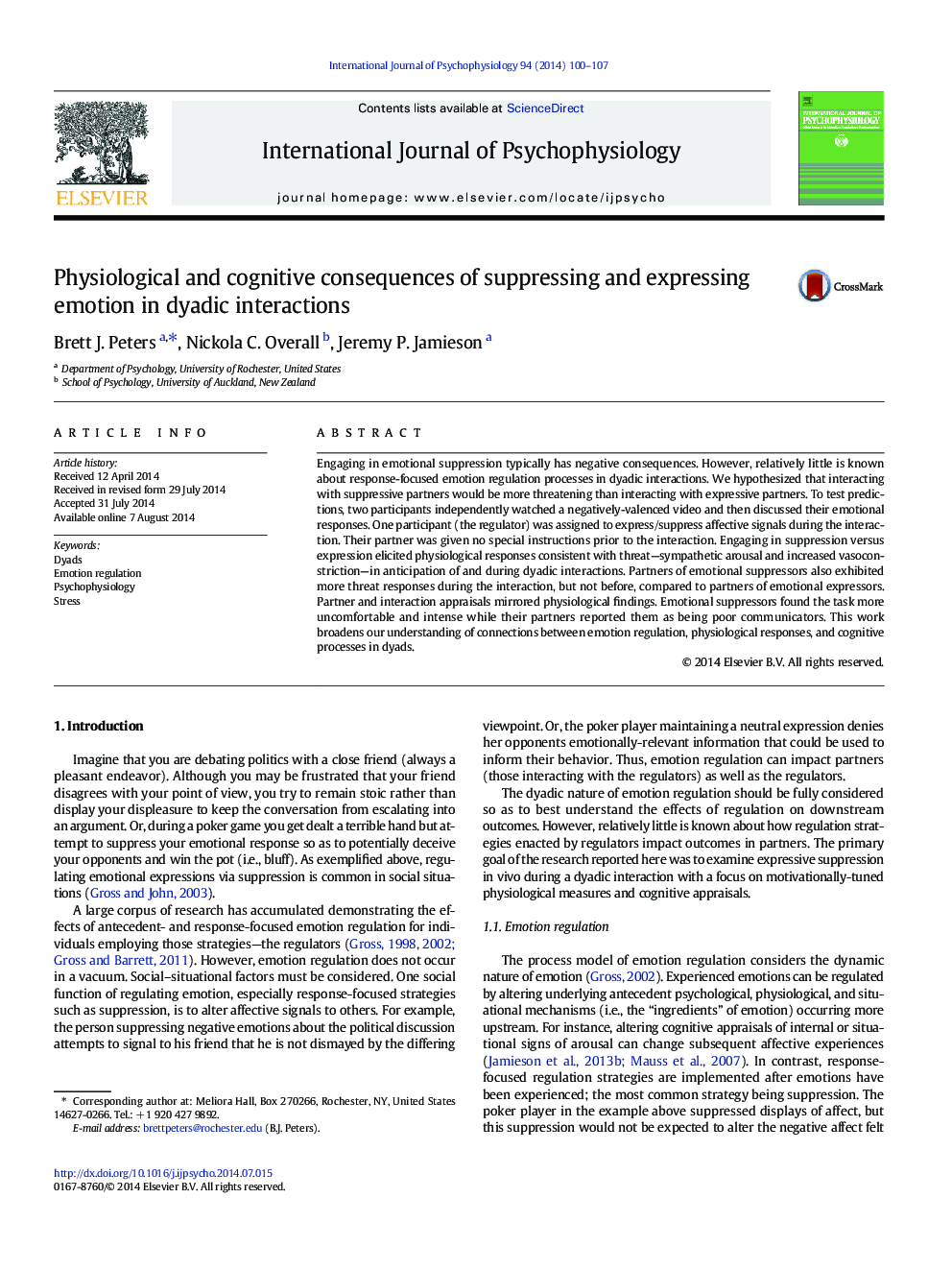| کد مقاله | کد نشریه | سال انتشار | مقاله انگلیسی | نسخه تمام متن |
|---|---|---|---|---|
| 929603 | 1474414 | 2014 | 8 صفحه PDF | دانلود رایگان |
• We examine response-focused emotion regulation processes in a dyadic interaction.
• We examined motivationally-tuned physiological measures and cognitive appraisals.
• Expressive suppression led to negative physiological responses for the dyad.
• Interaction and partner appraisals reflected the physiological responses.
Engaging in emotional suppression typically has negative consequences. However, relatively little is known about response-focused emotion regulation processes in dyadic interactions. We hypothesized that interacting with suppressive partners would be more threatening than interacting with expressive partners. To test predictions, two participants independently watched a negatively-valenced video and then discussed their emotional responses. One participant (the regulator) was assigned to express/suppress affective signals during the interaction. Their partner was given no special instructions prior to the interaction. Engaging in suppression versus expression elicited physiological responses consistent with threat—sympathetic arousal and increased vasoconstriction—in anticipation of and during dyadic interactions. Partners of emotional suppressors also exhibited more threat responses during the interaction, but not before, compared to partners of emotional expressors. Partner and interaction appraisals mirrored physiological findings. Emotional suppressors found the task more uncomfortable and intense while their partners reported them as being poor communicators. This work broadens our understanding of connections between emotion regulation, physiological responses, and cognitive processes in dyads.
Journal: International Journal of Psychophysiology - Volume 94, Issue 1, October 2014, Pages 100–107
